Choosing door hinges for heavy doors
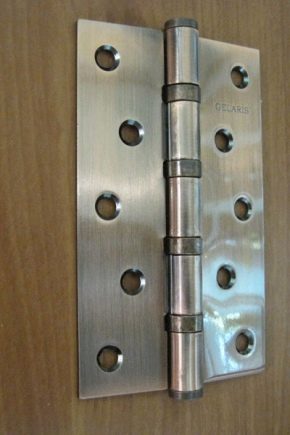
When ordering repairs from third-party organizations or purchasing a door block, which includes both the frame and the door itself, questions about the choice of load-bearing elements usually do not arise. A completely different situation is observed if you want to carry out repairs on your own. At the same time, massive structures require a particularly careful approach to fittings, therefore in this article we will consider suitable options for choosing door hinges for heavy wooden doors, as well as for metal and armored products.
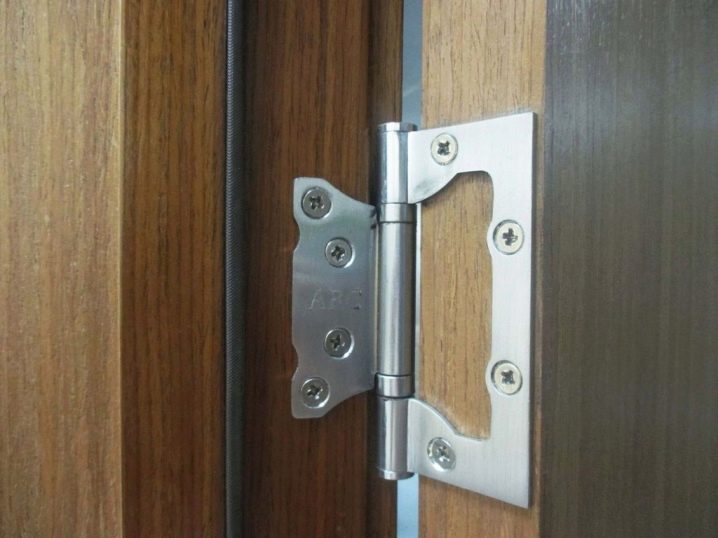
Varieties
Currently, door fittings are classified according to the following criteria:
- by design;
- by material;
- by symmetry.
In this case, according to symmetry, door hinges are:
- right;
- left;
- universal.
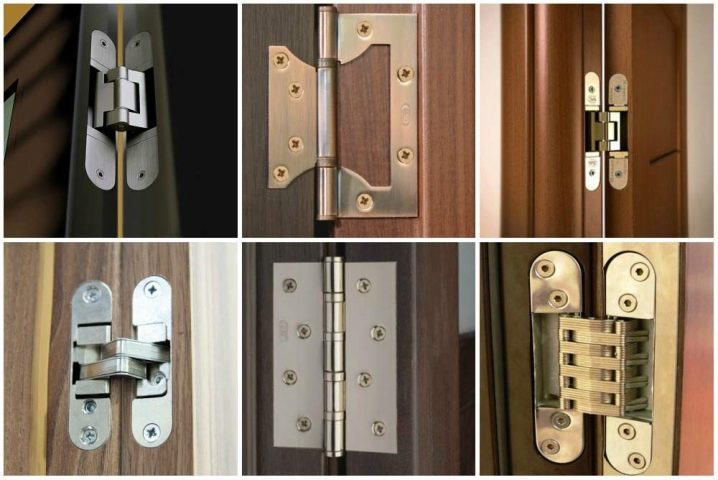
Symmetry is determined by the direction in which the canvas installed on the mount will open. The door installed on the left hinge mounted on the right side will open with the left hand towards itself, with the right version the opposite is true, but the universal model can be installed as you like.
Let's take a closer look at the most common materials and design options for door fittings.
Materials (edit)
All considered structures can be made from various materials. Moreover, all models are made only of different metals - less durable materials simply cannot withstand the weight of the structure. Theoretically, ceramics could hold such a mass, but in practice, hinges are not made from it, since such a hard material is very fragile and will not withstand dynamic loads (like slamming doors).
The following groups of metals are used in the production of loops:
- stainless steel;
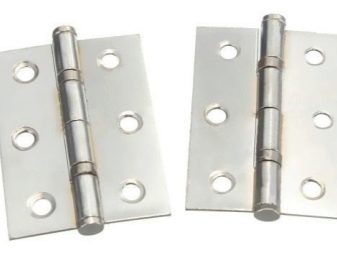
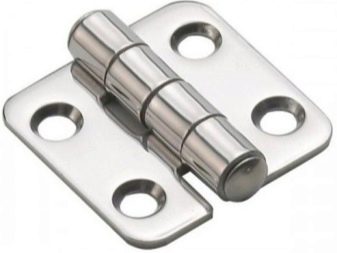
- black metals;

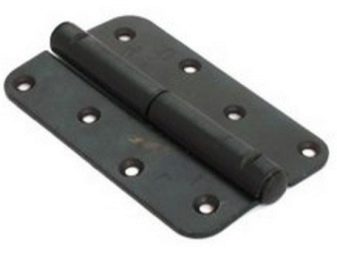
- brass;
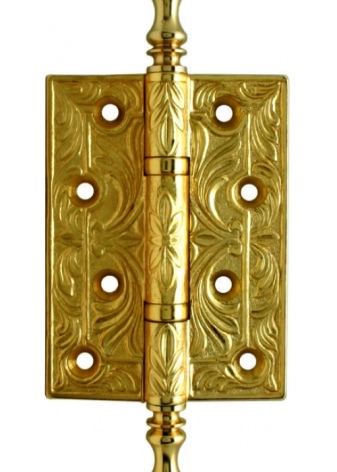
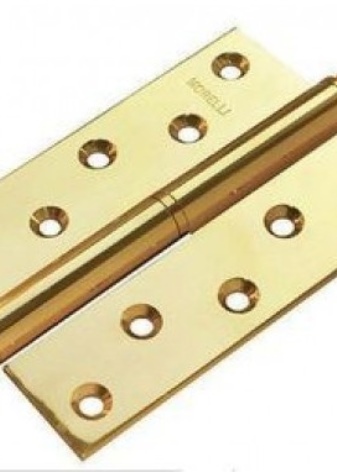
- other alloys.

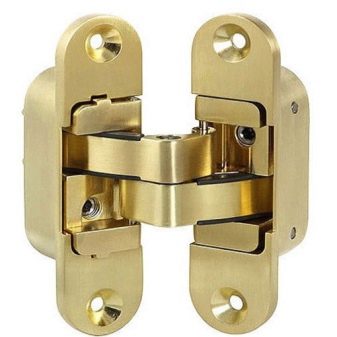
Products made of ferrous metal are best suited for massive structures, which are notable for their low price and excellent strength. Slightly inferior to them are more aesthetic and expensive stainless steel options, which may require more. More expensive than stainless steel, brass hinges are also quite durable, but at the same time the most expensive. But the options from alloys need to be carefully studied - if silumin or powder metallurgy methods were used in the production of such a product, then it is not worth installing massive structures on it.
Constructions
Now on the market there are a huge number of different hinge designs.
They can be conditionally divided into two groups:
- detachable;
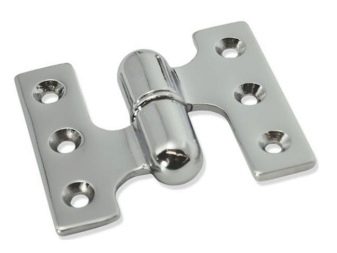

- one-piece.
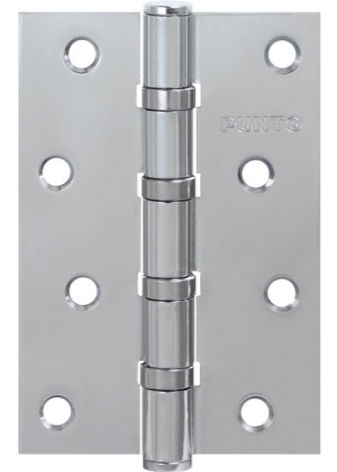

Detachable fittings are usually two elements connected by a pin, which can either be mounted in one of them, or inserted from the outside. This type of hinge is called awnings, and the type of connection is usually called "dad - mom". You can remove the door from the awnings by lifting it up. It is possible to dismantle the door from the one-piece hinge only by unscrewing the screws holding the hinge in the box.
Let's dwell on the most common types of structures in more detail.
Overhead hinges
This option is well suited for a massive wooden door, but on metal products it will look extremely inappropriate. Unlike more modern fittings, in the outer hinge, one of its parts is attached not to the end of the door, but to its outer surface, and has dimensions of several tens of centimeters.External options are most often made of ferrous metals by forging.
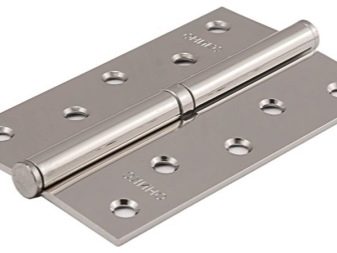
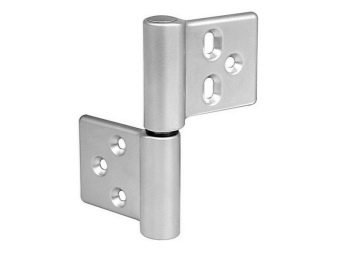
Canopies with pin
This type was the most common in Soviet times, it is a split design with a pin that is part of one of the two hinge elements. The second has a groove corresponding to the pin. The door is removed from such a fastening very quickly by lifting it up, therefore it is not recommended to install entrance doors on it. Canopies can be used for massive interior doors, only they do not look very aesthetically pleasing.
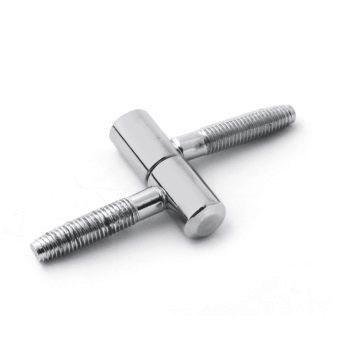
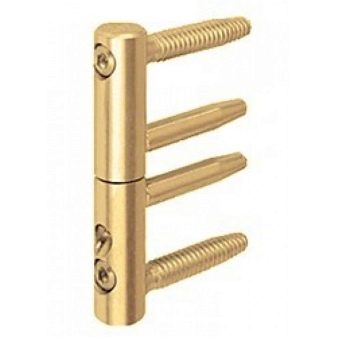
Through-post awnings
This option is a modification of the previous one, in which there is a groove for the pin in both loop elements, and the pin itself is inserted into them separately. The option in which the pin is attached with an easily unscrewed plug is great for passages between rooms, but for entrance doors you need to find an option in which the plug is sealed or welded.

For doors made of heavy wood or metal, it is worth looking for a canopy that uses bearings. It will cost more than the classic options, but it will last much longer and eliminate the risk of deformation of the fastening during operation of the structure. At the same time, doors installed on a product with a bearing will not creak.
Butterfly hinges
This option is only suitable for wooden products, as it is fastened by screwing screws both into the box and into the canvas itself. They are usually inexpensive, look very beautiful, but even the strongest of them can withstand a load of a maximum of 20 kg. So it is worth using them only for interior passages, having previously calculated the mass of the structure. They need to be installed strictly in one vertical axis, a backlash of even a few millimeters will lead to the need to dismantle the fittings in a couple of months.
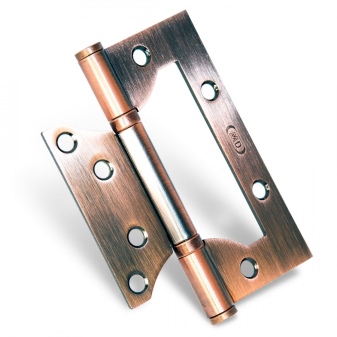
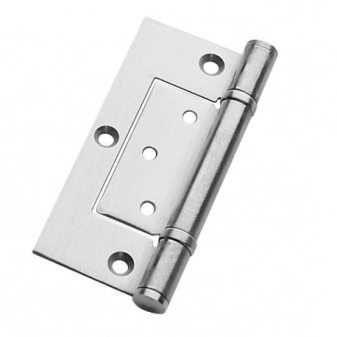
Corner structures
This mounting option is used only for rebated doors (when the outer edge of the outer surface of the door covers a part of the door frame). Usually their design is similar to the "Butterfly" or "dad - mom" awnings, only both elements are L-shaped.
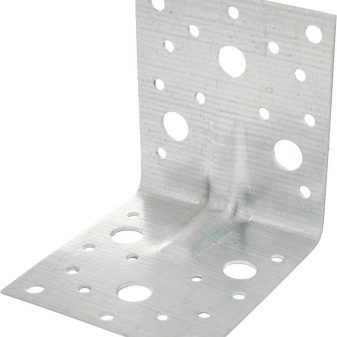
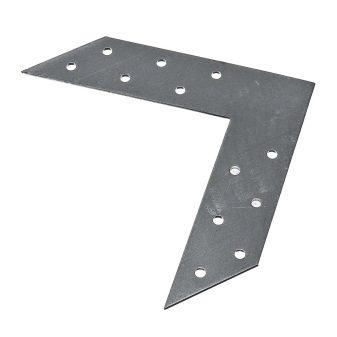
Double-sided options
A door equipped with such a fastening can open in both directions: both "towards itself" and "away from itself". In a household, such a need rarely arises, but if you nevertheless decide on such an option, then it is better to entrust its installation to an experienced craftsman, because the slightest mistake during installation is fraught with an imbalance in the structure. It is also not worth saving on the quality of such products - the load on them is much greater than on more familiar options. It is also worth choosing a model equipped with special springs that fix the door in the closed position.
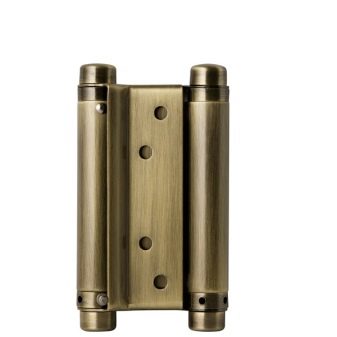
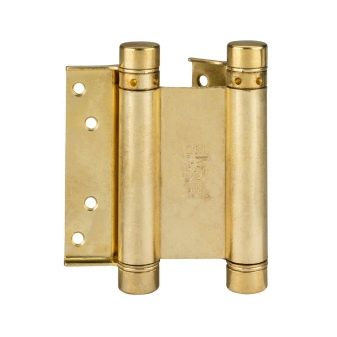
Screw-in models
These products are a modification of awnings, in which the hinges are not attached outside the canvas and the box, but from the inside with the help of special bearing pins, which are installed in the holes pre-drilled in the canvas and the box. Of course, these models are suitable only for wooden doors, and their weight should not exceed 40 kg.
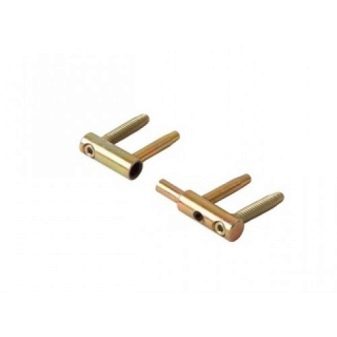
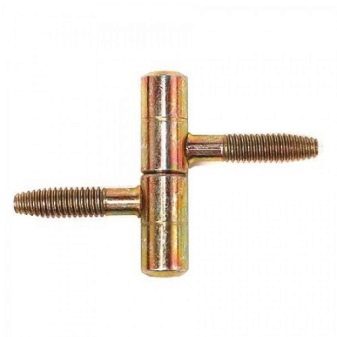
Hidden hinges
These reinforced products have a complex design, and their main advantage is that they are invisible from the outside, since all their elements are inside the box and canvas. At the same time, they are suitable for both wooden and metal doors, and their bearing capacity (provided that they are made of high-quality material) allows them to be installed on the heaviest metal, and even armored structures. They are produced exclusively from high-strength alloys or strong steels. It is better to entrust the installation to a professional - a home craftsman will not only have enough skills, but also tools (hinges cannot be installed into a metal structure without using a welding machine).

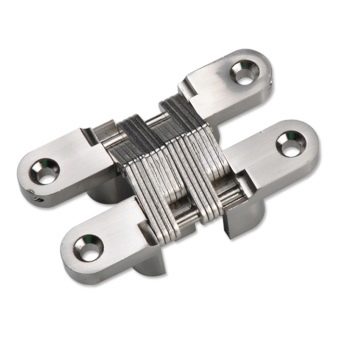
Calculation of the required quantity
Regardless of the selected model of fastening, there is a rule that ensures the safe operation of the door.
The number of fittings is selected based on the weight:
- if the canvas weighs less than 40 kg, then two loops will be enough;
- with a door weight of 40 to 60 kg, three attachment points will be needed;
- a door weighing more than 60 kg must be installed on 4 hinges.
How to choose door hinges and how they differ from each other, see the video.













The comment was sent successfully.